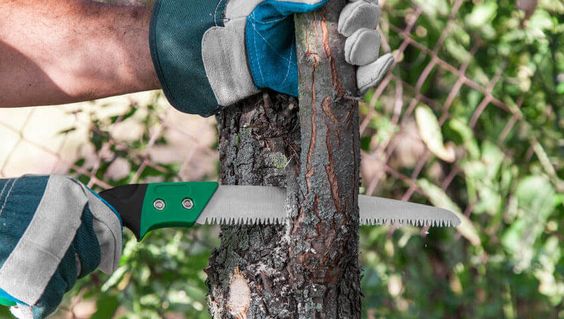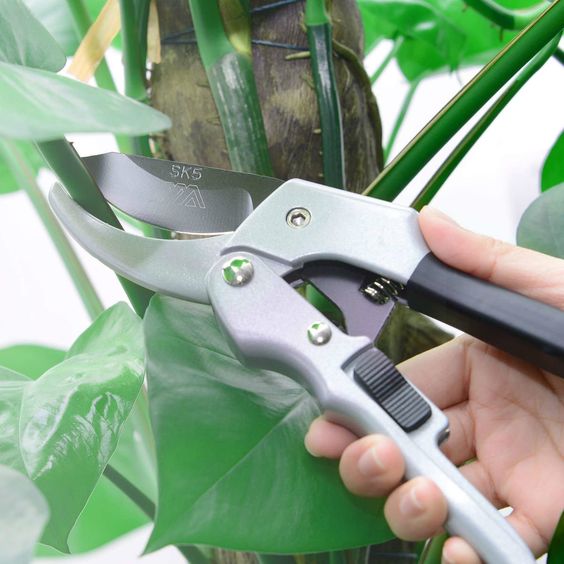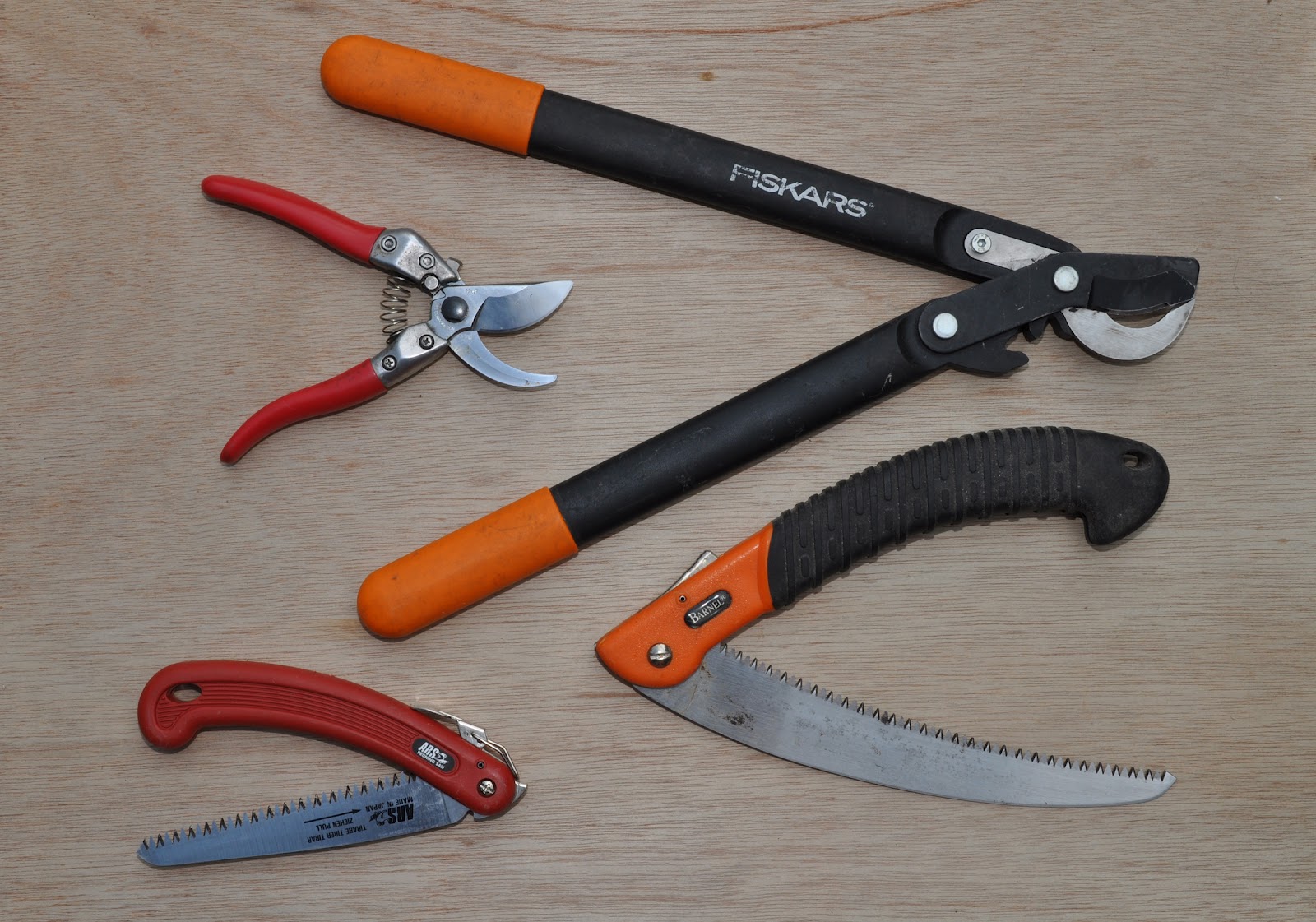Trees are the most notable feature of any landscape and it is essential to keep them trimmed and well-maintained in order to give your garden a beautiful and neat look. You can tell by looking at your shrubs when it is time for a trim, however, did you know that there are multiple ways to shape your plant?
From heading to pruning to pinching to shearing, no two cuts are exactly alike. With the help of different gardening tools, you can give your plants a distinct, unique look and feel. But when should you use a pruning saw and when is using this tool more appropriate?
Contrary to popular belief, you do not require a professional to prune your trees and plants. If you want to learn all about pruning saws and shears, including when the correct time to use them is, then read on. This article will tell you all about these invaluable gardening tools and how they can help you turn your garden into a beautiful piece of haven.
What is a Pruning Saw?
If you are facing a pruning task where the lopper is not appropriate, the hand pruner is too small, and the chainsaw is not feasible, then what tool are you going to use? The answer is pruning saw. A pruning saw is the best tool for cutting larger branches. It is capable of cutting branches from 1 ½ to 5 inches in diameter. It is available in various styles and designs and if used properly, can make quick work of your trimming chores.
Pruning saws come in various sizes and shapes – from a single blade mounted on a long pole to a small six-inch folding saw which will easily fit into your pocket. However, all pruning saws have one common feature; they have a metal blade with sharp cutting teeth machined into them.

All pruning saws have the same purpose. They cut through wood. They can be used to remove a part of a plant in order to shape it (topiary), remove diseased or dead wood, cut up firewood, or to remove the plant entirely.
Pruning saws are fashioned to cut on both the push and pull stroke. This allows them to cut through shrubs or tree branches easily and quickly, leaving behind a rougher finish.
Are All Pruning Saws The Same?
Before buying a pruning saw, it is important to realize that pruning saws can be very different from each other. They are not designed to do accomplish the exact same job. Each version has a different shape and a unique curvature to handle specific kinds of tasks. The most common type of pruning saws are:
Handheld Pruning Saw
These are the most popular saws that can be used both indoors and outdoors for easy jobs. This versatile tool is perfect for small branches. It can also be used for thick branches, however, it will take a little more time and effort to cut such branches. If you want a portable, small pruning saw that can be easily stored when not in use, this option is the best.
Pole Pruner
A pole pruning saw, as the name suggests, is a blade attached to a long handheld pole for pruning the high branches in trees. Although its length results in reduced power, pole pruners typically have a curved blade or a hook at the end of the blade which helps in pulling cut branches that are prone to get stuck in the tree. The length of the pole pruner increases its weight, making it heavy, and thus, making it harder to hold this saw for longer periods of time.
Straight Blade Pruning Saw
Straight blade pruning saws have curved handles but their blades are straight. Shaped like a pistol grip, these handles are very comfortable to hold. These are ideal for pruning sap and greenwood.
Curved Blade Pruning Saw
Curved blades, unlike straight blades, are perfect for heavy-duty tasks. The curve aids by adding strength and durability to your cut, slicing the wood as easily as bread. These saws are also effective in cutting smaller branches. However, this type may make cutting huge branches a bit awkward as the shape is not ergonomically designed.
Folding Pruning Saws
Folding pruning saws allow greater portability to the user. Their various sizes make them perfect for nearly every situation. The smallest folding pruning saw is less than a foot in length and is ideal for delicate pruning of Bonsai trees, while the largest folding pruning saw comes with a twenty-inch blade and an overall length of twice that.
What Are The Best Uses For Pruning Saws?
The following are some of the best uses that make pruning saws an essential tool for a gardener:
Aesthetics
Everybody appreciates a tidy row of bushes or groove of trees. Pruning saws make it easy to take care of overgrown bushes. Neatly-shaped shrubs not only open up the view of the garden by unblocking windows and clearing pathways, but also lets more sunshine and air into your home.
Plant Health
Sometimes it is not possible for shears to get the thicker branches that may be suffering from a disease. Therefore it is better to use the right pruning saw, which will be strong enough to cut off the big branches. This helps to save the healthy parts of the tree and stops the spread of disease that may be affecting a limb.
Able To Reach High Branches
Pruning saws have the power and reach to allow them to reach those high, thick branches which may not be possible with pruning shears.
Camping and Trekking
A pruning saw also comes in handy if you want to cut through thick growth to allow you to explore a trail with your children. A folding pruning saw helps to clear a space for your tent or make a fire while you are out camping.
What Are Pruning Shears?
Pruning shears, also known as clippers, pruners, or secateurs are a type of scissors used by gardeners. Their primary purpose is to shape and trim plants, deadhead, prune out damaged or dead foliage and small branches, and cut back perennials.
Pruning shears are one of the most used tools. Therefore, it is vital to get a pair that work well for you. These scissors are powerful enough to prune tough branches on shrubs and trees up to two centimeters thick.

Generally, pruning shears do not cut branches that are over 0.5-inch in diameter. In case you are cutting something thicker, you will need a pruning saw or a lopper.
As a gardener, you have likely used a set of pruning shears in your garden. A good model is vital as it makes your gardening work much easier and keeps your shrubs and plants healthy. Choose a pair that fits in your hands comfortably, has nice sharp blades, and is constructed from high-quality materials.
Choosing the cheapest pair is not necessarily the best option. By investing in a good quality pruning shear, you can not only save time but also reduce the risk of injury.
Are All Pruning Shears The Same?
There are different types of pruning shears, each specifically designed for slightly different uses:
Bypass Pruners
These shears act like a pair of scissors. The two blades bypass each other like scissors, with the branch to be cut in between. This enables a clean and neat cut if the blades are sufficiently sharp. These shears have at least one curved blade.
Only one side of the blade on these pruners is sharpened. Therefore, it needs to be very sharp in order to be effective. The bypass pruners are the most common and versatile types of shears that help you take care of your garden easily.
Anvil Pruners
Anvil pruners, contrary to bypass pruners, have a single sharp blade that lowers down and pushes against the anvil (flat surface) which results in a clean cutting of the branch. They are particularly effective in cutting thick branches.
The best thing about these shears is that they work effectively even when slightly blunt. This is because both sides of the blade on anvil pruners are sharp.
Ratchet Pruners
Ratchet pruners work on a special mechanism which allows them to cut tough and strong branches, even if the user has poor hand strength. By squeezing the handle inwards, the cutting blade moves down and then latches into place. Then, the user releases the handle and squeezes it again, making the blades move together, providing the user with a mechanical advantage. These pruners are ideal for people with muscular problems or arthritis.
What Are The Best Uses For Pruning Shears?
Keeping your landscape and garden in good shape requires maintenance, care, and regular pruning. A good pair of pruning shears help to make this job faster and more efficient. The uses of pruning shears are as follows:
Remove Dead Plants
The primary use of pruning shears is to remove diseased, damaged, or dead branches and stems from bushes and plants. It is vital for the health of plants to remove dead parts because dead stems can attract unwanted insects and harbor diseases.
Improve Plant Health
Pruning shears also help to improve plant health by preventing undesired growth. They are used to trim, clean, cut, or remove unwanted weeds and branches, thus allowing the healthy parts to breathe and grow freely.
Give Shape To The Bushes
Pruning shears are also used to give a beautiful shape to the bushes and cut thorny flowers such as roses. They are small, that is why it is easy to carry them with you around the garden.
Conclusion
Proper pruning can change the look of your garden. It is a horticultural art form which can transform your garden into a place of beauty. It is not just the removal of branches and weeds, it is a careful procedure. Therefore, it is vital to cut the branches in an appropriate manner with the proper tool in order to minimize potential damage to the plant.
